Sam Schultz
Words by: Brian Goldstone
After a career spent competing at the highest levels of his sport, former Olympic and World Cup mountain bike racer Sam Schultz is forging a new path that keeps the love for the ride burning strong while stepping back from the start line. And 7mesh Apparel is pleased to be part of this journey by supplying Sam with a full range of apparel for his bike adventures.
Having officially ended his time as a full-time racer, Sam has now set out on a long-term road trip in his custom Sprinter van, accompanied by his dog Pancho. Some of the stops along the way will see him throwing his energy into developing a youth mountain bike league in his home state of Montana and spreading his love for the sport through road and mountain biking camps at Cycling House in Tucson, Arizona.
His van is loaded with a quiver of Rocky Mountain bikes to accommodate a range of planned riding adventures including epic gravel sessions, multi-day MTB, and big mountain rides. He’ll be outfitted with a full range of 7mesh tops and bottoms, from ultra-light race day essentials to the sort of multi-day, multi-purpose tools he’ll need for packing light and moving fast across a huge range of conditions and rides.
“I couldn’t be more psyched than to partner with such an amazing and tech-forward clothing company,” said Schultz. “I can’t wait to have them on my back for my schedule of races and adventures this season. It’s going to be a comfortable year!”
Where did you grow up, and where do you live now?
SS: I grew up in Missoula, Montana and I still call it home. Like a lot of kids, I couldn’t wait to move away when I graduated high school. It didn’t take long to come to draw me back and realize that I am pretty dang lucky to have grown up here.
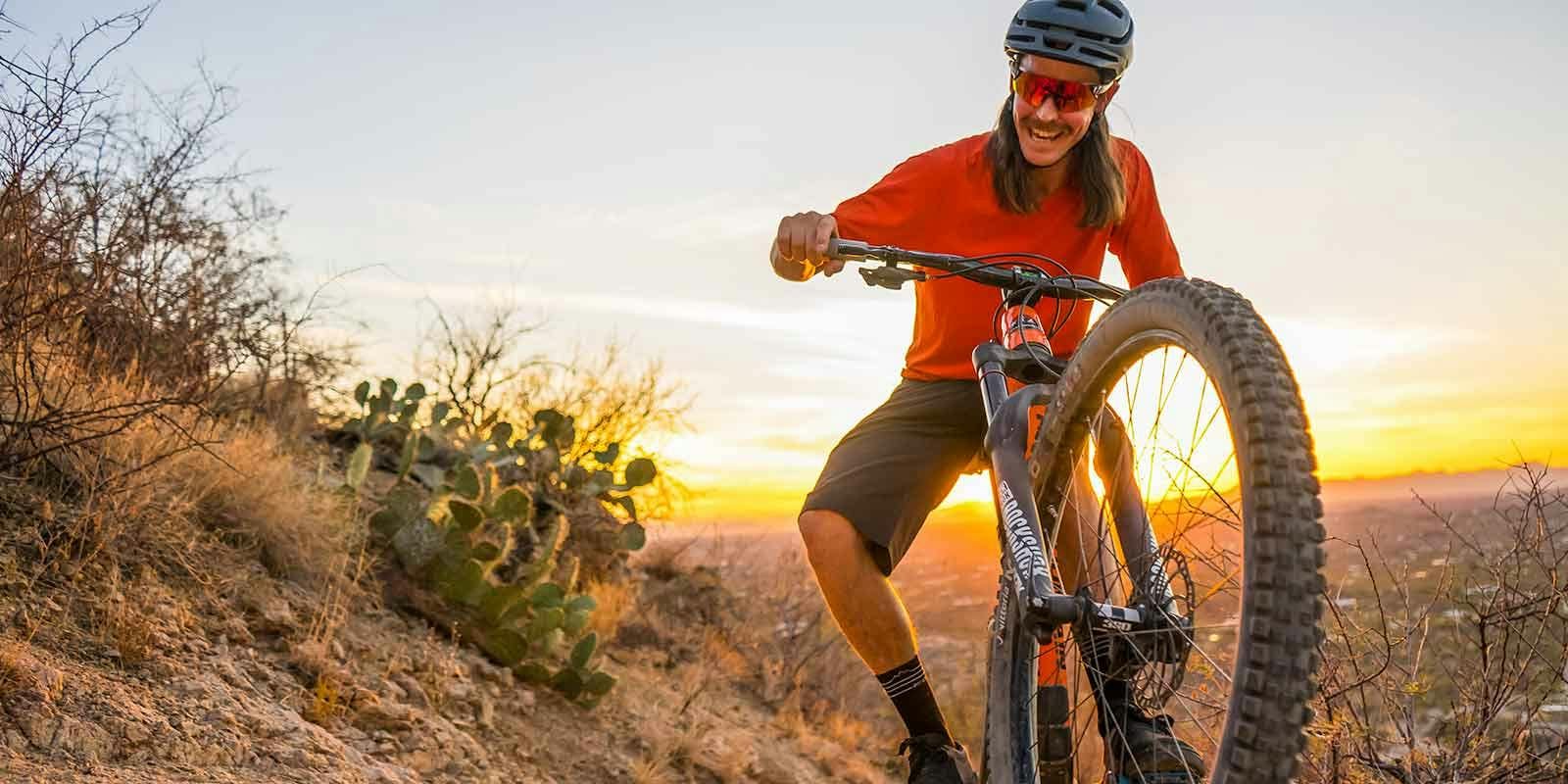
What first got you into riding?
SS: My uncle got my brother and I hooked on riding. Growing up with a sweet trail network out the back door, we were naturally drawn to explore our backyard. Uncle Chuck was an avid mountain biker who showed us what was possible on mountain bikes, so it didn’t take long for me to become obsessed with riding and talking to my parents about taking me to my first race (at my uncle’s suggestion).
What was your path to the Olympics? Was racing part of your upbringing?
SS: I entered my first race was when I was 13, and as soon as I finished all I could think about was the next one. It wasn’t long until my brother got into it and pretty soon my Dad was racing too. My parents were incredibly supportive; loading up the minivan with bikes and camping gear and traveling all over Montana and eventually the country. In my last year as a junior, I set a goal to make the world championship team and I squeaked my way onto the squad. The following year I was invited to join a U23 development program that USA Cycling had founded, and that program gave me the opportunity to compete on the World Cup circuit. After several years of international competition, I had progressed enough to score my first pro contract. It was a dream come true. I didn’t really believe that the Olympics would be a possibility until I was named to the team leading up to the 2008 Games. I didn’t make that team, but I knew I had a shot for 2012.
So, you ended up at the 2012 London Olympics. Was it what you expected?
SS: It was amazing to have the opportunity to represent my country on the biggest sporting stage out there. I underestimated the feeling of having what felt like my entire community cheering me on. I was super nervous, and the whole experience was out of this world. I finished 15th on the day – a result I was very proud of. The biggest downside to competing in the mountain bike race was that it happened to be on the last day of the Olympics. I had to miss out on some epic parties that week, but the closing ceremony was truly something special.
What have you been doing at the Cycling House in Tucson?
SS: I work both as a ride guide and a camp director for the Cycling House. I’ve been working for them on and off for the last 11 years. A high school bike racing buddy, and still one of my best friends, started the company 2 years before I got involved. We run all-inclusive cycling getaways out of a big house in the desert with delicious food, lots of shared hangout space, and great groups of people. They also run trips in Montana and all over the world now. We work like dogs, but we do so alongside great friends and with very interesting clientele. We get to spend a lot of time with our clients–and with bikes as a common connection between people who often times have polar opposite backgrounds, mutual respect, interesting conversation, and new friendships are usually the result.
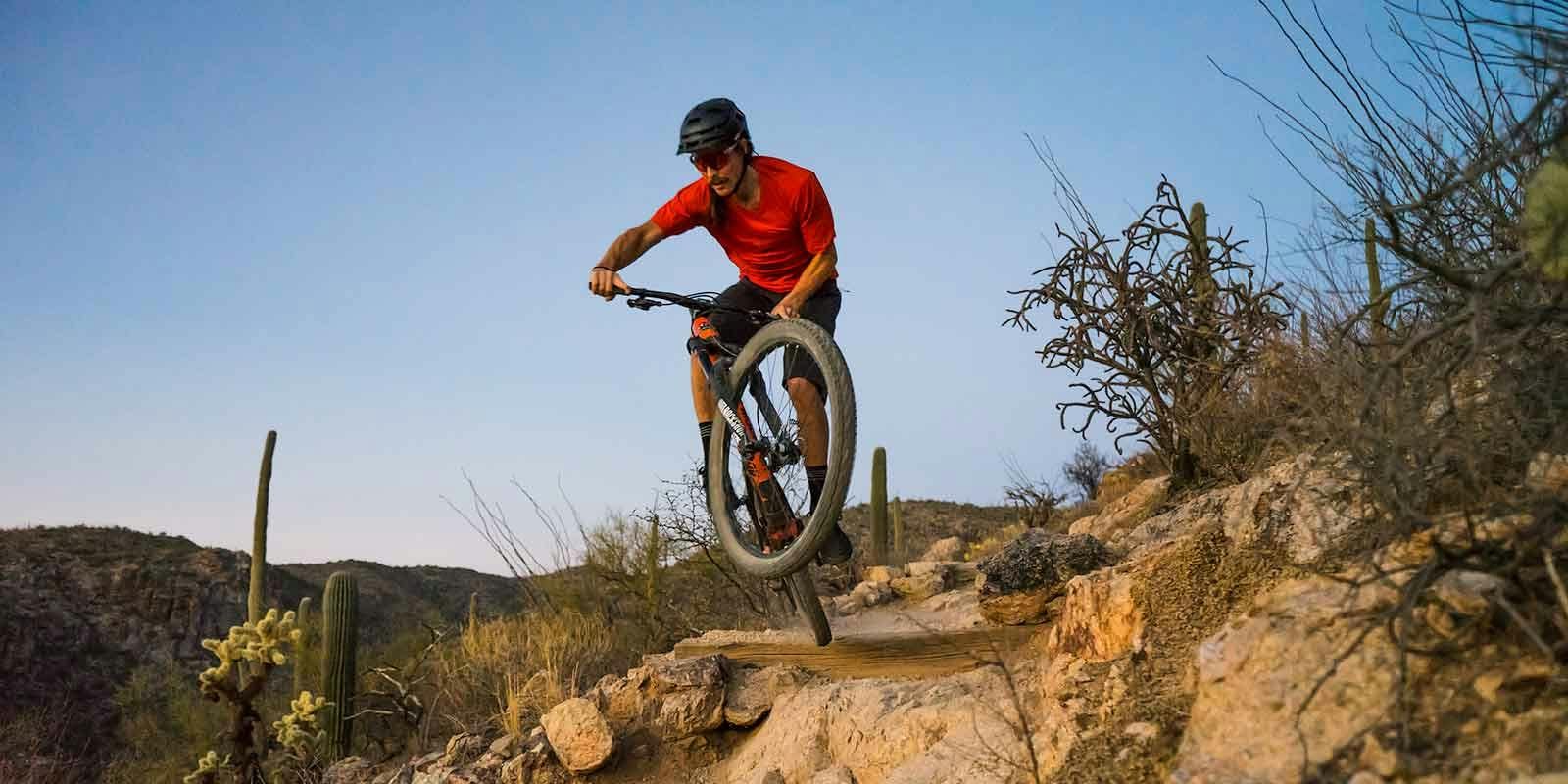
Tell us about your goal of getting a High School Mountain Bike League going in Montana.
SS: Ever since I stopped pursuing racing as a result of some back issues and a couple of ensuing surgeries, I’ve given myself a lot of time living in what I call, “temporary-semi-retirement”. Retired life is great, but I’ve also been seeking out the next project that will push me to be less self-serving and spread my passion for cycling.
All signs pointed towards a project with the NICA (National Interscholastic Cycling Association) high school and middle school mountain bike racing movement. NICA exists in 22 states across the US now and it is flourishing. Montana doesn’t have a league yet, and I see this as an amazing opportunity to make mountain biking more accessible to kids in my home state. I think about how lucky I was to get introduced to mountain biking at a young age, and how much I learned from mountain biking. I would have been through the moon if we had a program like NICA when I was growing up, and I couldn’t be more excited to be working on making it happen.
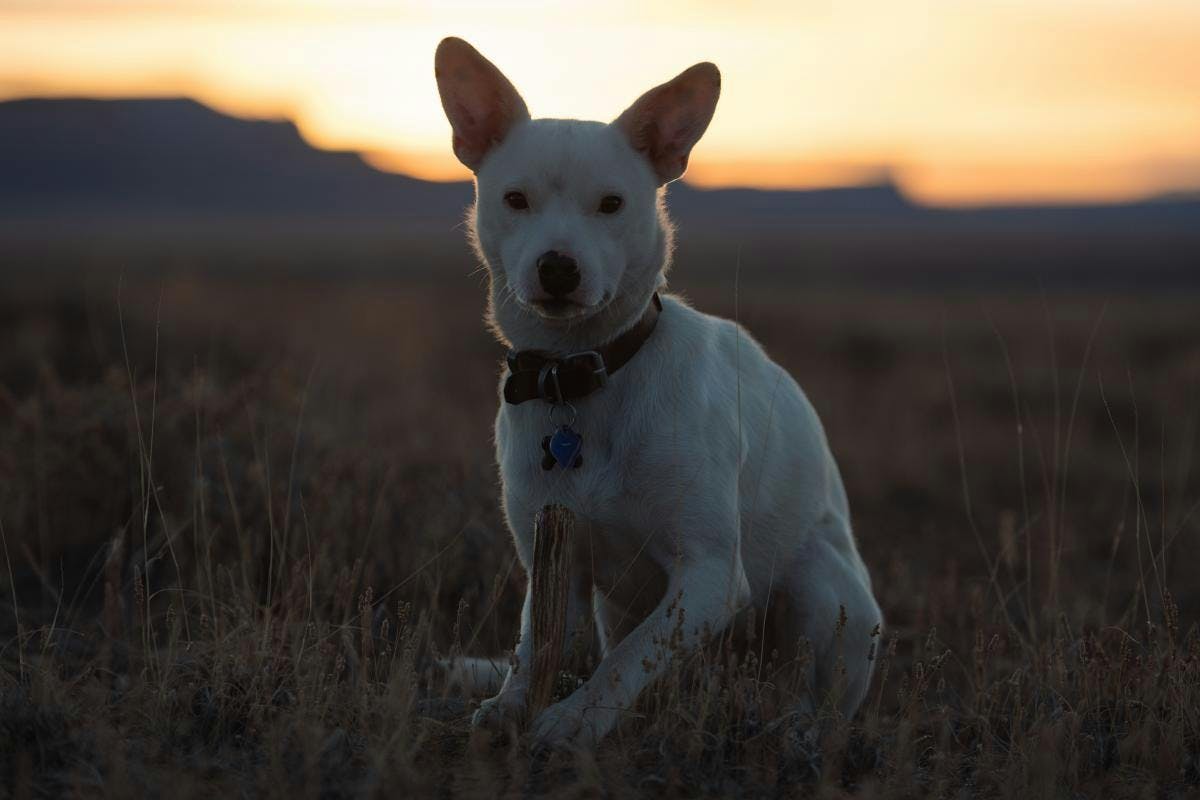
How did you meet your dog, Pancho?
SS: Exactly a year ago, I set off on a little motorcycle trip into Mexico. I had two weeks off and I wanted to see some new country, explore cool roads, and of course eat delicious tacos. Towards the end of my trip I rode past a burning dump–black smoke billowing out along a beautiful coastline. I was fascinated and had to pull in for a closer look.
The first thing I saw through the smoke was a puppy peering out of a water jug. I couldn’t think of much to do at that time other than bring some food and water to the pup, but even after I got back to Tucson, I couldn’t stop thinking about that dog. I drove back down in my van a couple days later and what I thought was one puppy turned out to be four–three black and brown puppies, and one scrawny little white one. I was chasing these puppies around through broken glass in a burning dump at sunset and I couldn’t catch them.
It was getting dark quick, so I started going after the smaller, white one. He fell asleep on a pile of trash while I was chasing him, and I scooped him up. He weighed less than 5 pounds, smelled like rotten fish, and was covered in fleas and ticks. I felt guilty after taking him away from his siblings, so I left the van door open to give him the chance to run free. He sat there staring at me. The whole story is pretty long (with getting him across the border and all that). You might have to buy me a beer to hear the rest…
You’ve told us before that your exit from the racing world was not an easy one. What was that like and how have you balanced your competitive drive?
SS: My exit from the racing world was pretty long and drawn out. I went through two pretty serious back surgeries; one that resulted in a spinal infection, and one that left me with rods and screws fusing my L4 and L5 vertebrae together. For a year before surgery, and a year after each surgery, I did physical therapy exercises more obsessively than I’ve done anything in my life. I had the blinders on and I wanted to get back to racing. I guess it’s that stupid, competitive drive I have. I think a rationale person would have thrown in the towel quite a bit sooner. For me, it’s always been that if I put in the work, I see the result. That’s how my whole bike racing career was, and I feel very lucky that it was like that.
I never tested well with VO2 max and lactate threshold. My hematocrit was so low bloodwork always flagged me as anemic. According to the lab, I should be slow, but I stuck with it, had fun, worked hard and the rest is history. Making the decision to exit from racing is probably been one of the hardest, but also the best things I’ve ever done. It was a chance for me to change my perspective completely. I lived in this bubble where I was obsessed with what I was doing, and racing was my whole world. Then I got out of racing, and it’s hard to even find the results.
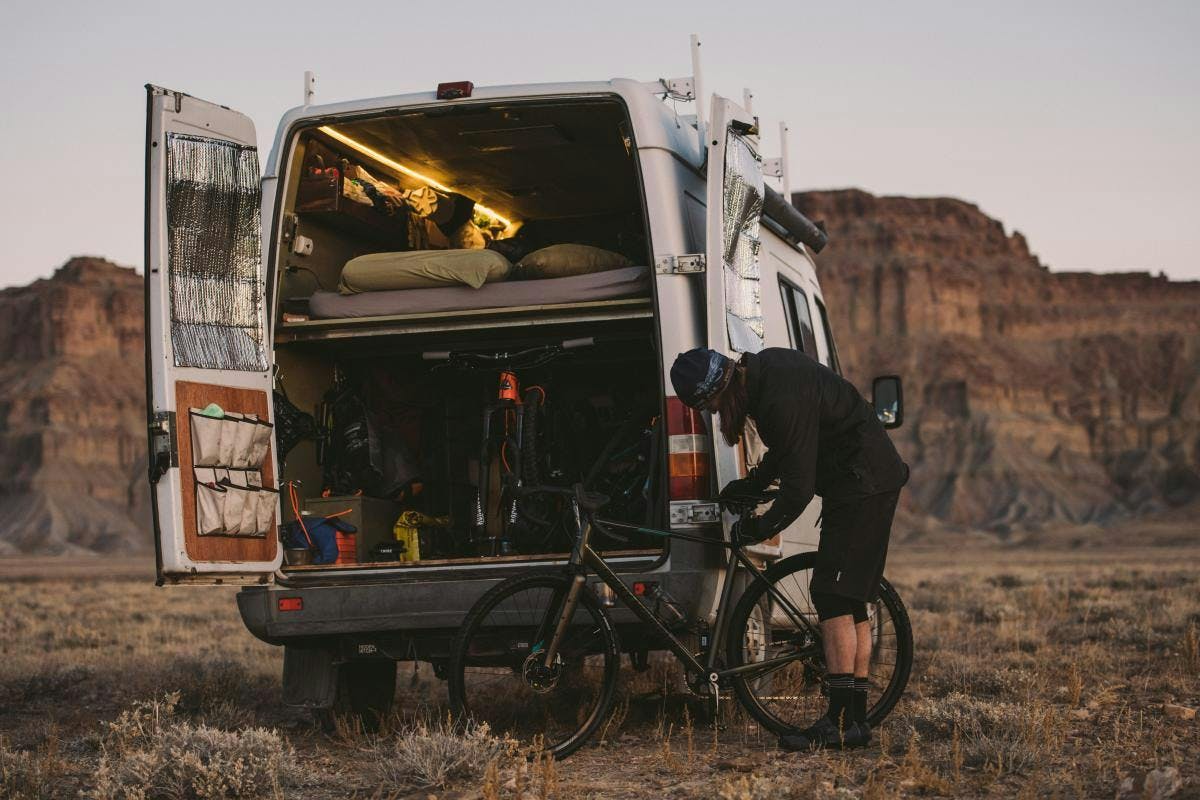
How have you continued to keep riding as part of your lifestyle? Why?
SS: After finally coming to the realization that being a racer wasn’t going to work due to my plaguing back injury, I didn’t really know what to do. I thought it would be cool to put together an ambassador gig, but there are a ton of challenges trying to sell yourself from that angle as well. I pieced together a couple of low end deals, but nothing big enough to really make it worth doing anything that I didn’t actually want to do. It was a blessing in disguise, because it forced me to put effort into doing my own thing and really becoming that authentic story I was trying to sell. I started doing what I wanted to do and then some sponsor relationships have grown and it’s a cool gig.
Tell me about your pace in the van?
SS: Almost always, I would say the more time I can have to get from point A to point B the better. There are so many things to see along the way, and the van makes it easy. Just stop and you have your garage full of bikes, your dresser, your changing room, your kitchen, your bed–everything you need. The best times on a road trip are the days the van doesn’t move at all. If I stop, park the van, and just get to hang out. That’s the key. Nowhere to be and all day to get there. That’s a good way to be in the van.
What guides you as an evolving athlete?
SS: Endurance athletes that get to a high level of their sport usually don’t really get there without being pretty damn selfish. You have to take care of yourself, and it’s a lot about you to get to that high level. You end up making a lot of sacrifices, and it becomes difficult to what’s best for you with what others are expecting. I’m trying to work on being a little less selfish, because I have trained my whole life to perform at a high level. I say, “a little”, because I know I have a long way to go.
I’ve also really been taking my time to try and figure out what actually makes me happy. If I can get some riding in with interesting people and find some time for myself where I’m able to relax, I’m generally in a good spot. I still really like to push myself physically, and I feel really lucky to be able to do it even after my struggles with injuries. The only thing I have found that compares to doing something yourself, is sharing it with someone else. Most people learn that in kindergarten, but that has been a pretty big epiphany for me.
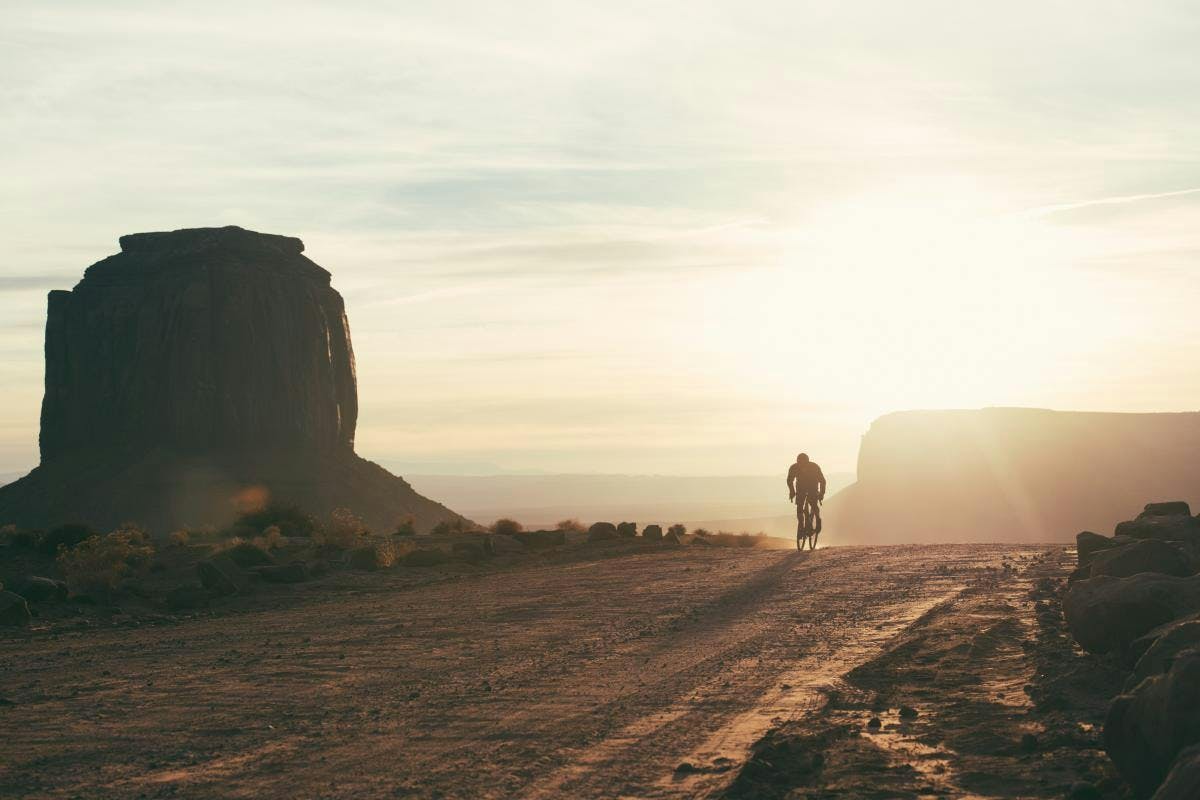
What advice would you give other people who are thinking about ditching the traditional life and hitting the road?
SS: A lot of people get in over their head trying to keep up with what other people are doing. Everything comes with sacrifices; the grass is always greener. I think being able to truly own what you’re doing at the moment is the best advice I could give.
I certainly don’t have it all figured out. I’m 32, I don’t really have a career right now, and sometimes I’m like “shit, what am I even doing?” but then I realize that I get to ride where I want to ride, work when I want to work, and piece it all together the way I want to. For me, as long as I’m learning I feel like it’s all worthwhile. I don’t think I’ll live the full “life on the road” forever – I kind of hope not – but I’m not going to regret the time I have spent doing it, that’s for sure.
The Long Way from Rocky Mountain Bicycles on Vimeo.
